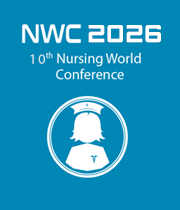Title : Pathway aligned degrees: A strategic solution to the global nursing shortage
Abstract:
The global healthcare system is facing a critical workforce shortage, with the U.S. projected to lack up to 3.2 million healthcare workers by 2026. The nursing profession is at the center of this crisis, with New York State expected to face a shortfall of nearly 40,000 nurses by 2030. A significant barrier to addressing this shortage is the lack of nurse educators, which limits the number of students that nursing programs can enroll. To combat this challenge, innovative educational solutions are necessary to create a sustainable pipeline of qualified healthcare professionals. This presentation explores Pathway-Aligned Early Credit Sequences, a strategic model designed to establish seamless educational pathways from high school to nursing and other healthcare degrees. By integrating early college credit, microcredentials, and Credit for Prior Learning (CPL), this approach provides students with opportunities to gain academic credit for prior work experience, accelerating degree completion while reducing financial burdens. The model supports non-traditional students, working professionals, and underrepresented groups, expanding access to nursing education and ensuring a more diverse and culturally competent healthcare workforce. As New York State’s first and only public online university, SUNY Empire State University is uniquely positioned to lead this initiative, emphasizing access, diversity, equity, inclusion, and innovation in healthcare education. With an extensive presence across the U.S. and internationally, SUNY Empire fosters flexible learning environments that accommodate students balancing education with work and personal responsibilities. Key topics discussed in this presentation include the nursing workforce crisis and faculty shortages, the role of diversity and equity in nursing education, the benefits of stackable microcredentials and early credit, and the global reach of SUNY Empire’s workforce development initiatives. Additionally, the session will advocate for policy changes and institutional investments to expand access to structured educational pathways, ensuring a more resilient and well-prepared nursing workforce. By forming strategic collaborations with high schools, healthcare organizations, and policymakers, the Pathway-Aligned Early Credit Sequence presents a transformative solution to the nursing and healthcare workforce shortage. This model not only increases the number of nursing and other healthcare profession graduates but also improves workforce diversity and healthcare accessibility, shaping the future of nursing education and strengthening the global healthcare system.



